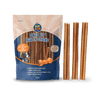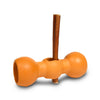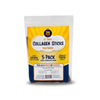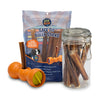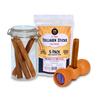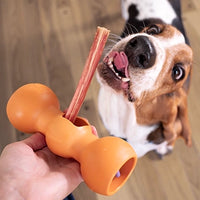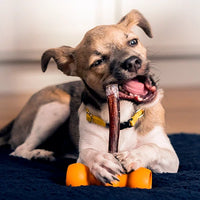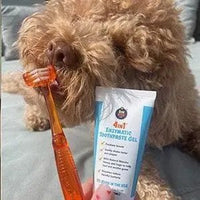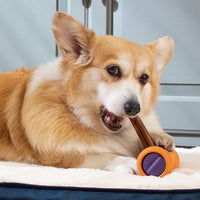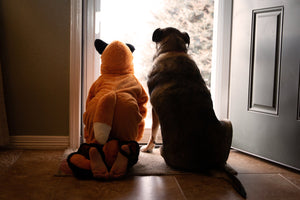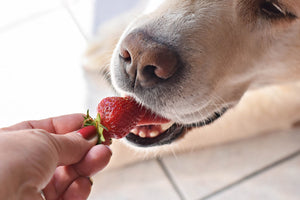
Let’s be honest: dog ownership can be just as stressful as it is joyful, especially if your dog doesn’t like to be left alone.
Even for the most committed dog owners, work, family and social commitments can get in the way of being able to give your dog constant attention and companionship. Leaving your dog home alone can be hard for the both of you. Separation anxiety in dogs is a common behavioral issue, but there are ways to avoid it and correct it if it’s already started.
We know that navigating this situation can be tricky. Leaving a dog with separation anxiety can stir up your own feelings of guilt or worry. The good news is, there are tested methods for making time alone easier, happier and safer for your furbaby. Getting into a groove will take time, consistency and patience, but never fear, we’re here to help with some best practices for fostering a fear-free furbaby!
Consistency, patience and gradual changes are the three main ingredients for successfully leaving your dog home alone.

3 Simple Tips for Solving Separation Anxiety in your Dog
Start small
Make sure that your time spent away, the space where you leave your dog, and the attention you give her as you leave are all SMALL.For example, when first training to your dog to be home alone without fear, kennel her or keep her confined to a small, cozy space in your home. As your pup gets more comfortable spending time alone, you can slowly expand the area where she can roam. But don’t be surprised if she chooses to stay in the small space! That just means you did a great job making it comfortable for her.
When leaving the house, begin with small increments of time: 5 minutes, 10 minutes, 15 minutes at first. Work your way up to longer stretches of 20-60 minutes and more. Slowly stepping up your away time will help your dog learn that you do come back and usually pretty soon. The anticipation of your return becomes less upsetting for her, and allows her to relax instead of panic.
This one is very important, and might be the hardest: don’t make a big fuss about leaving! Contrary to our instincts, your extra attention to the leaving process does not comfort your dog. She won’t understand when you tell her “don’t worry, it’s gonna be okay, I’ll be back soon sweetie, I’ll miss you…” but she will hear the tone in your voice and she will feel the worry that’s creeping into your body language. Avoid ramping up anxiety in your dog before you’ve even left by just grabbing your keys and going. You don’t have to be sneaky - just be confident and calm.

Provide comforts
Dogs love being cozy - and their small space will help with that! Make your dog’s space is soft, plush and full of favorites. Special toys and treats will help keep him entertained while you’re out, and cozy bedding will encourage a long, luxurious nap! If snuggling is part of your daily routine, try providing him with a blanket or piece of clothing smells like you. A whiff of familiarity will provide a sense of comfort while you’re gone.
Of course, always make sure to leave fresh water while your gone and keep an eye on the time to avoid accidents in the house. If a mid-day stop a thome is not realistic for you, that’s ok! There are plenty of dog walking services and daycares that can help give your dog the stimulation they need while you’re away.

Be consistent
Breaking habits and changing behaviors takes time for us humans, and it does for dogs too. One of the best things you can do to help your dog feel relaxed when home alone, is to establish a routine and stick to it!An ideal dog routine might look like this:
- Brisk morning walk before heading out for the day
- Kennel time with breakfast in a slow-feeding dog bowl or puzzle feeder to keep your dog busy and stimulated
- Afternoon walk, playtime or romp at the dog park
- Special treat (and nap) in the kennel
-
Evening meal, walk and cuddle time
Notice that a great routine accounts for adequate exercise right before leaving your dog alone. This pattern will reduce stress and anxiety, and alleviate the urge for her to be physically active while you’re gone. Another trick is to treat your dog before you leave the house, so she begins to associate your departure with positivity. Make “home alone” treats extra special and don’t offer them at any other time.
Remember, dogs love to please us! We can help them succeed by establishing routines so that they can follow them. If you build a daily routine that fits your lifestyle, you’ll both be able to maintain it beyond the training period.
Not too difficult, right? It might take some time, but you now have the basic building blocks for helping your dog mature into a calm, confident stay-at-home pet.
Related Resources
Why Dogs Love to Chew + How to Encourage Good Chewing Behavior
Can Bully Sticks Make My Dog Sick? Understanding the Health Benefits and Risks of Bully Sticks
What to Do If Your Dog is Choking - How to Recognize the Signs and Perform the Heimlich Maneuver


